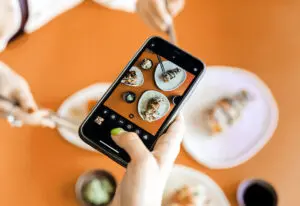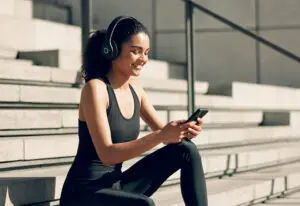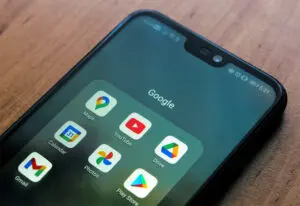
2020 Branding Trends: What to Expect in the New Decade
It’s officially the time of year where everyone rethinks past choices and makes commitments for their future. Maybe for you, that means switching up your diet or your career. For brands, a new year can mean a suite of new trends, best practices, and new mediums. If you hold a role in the marketing industry, keeping up with 2020 branding trends is literally your job.
It also means that you position your company to crush it in the new year (and, hello, new decade) ahead. We’ve compiled a list of our favorite trends in action and what to expect in with 2020 branding trends.
A look back on branding trends
In the past few decades, branding has gone through some wild trends. In a considerable swing from traditional advertising in the ’80s and ‘90s––from print media to billboards––brands at the dawn of a new century embraced the digital age.
Since then, we’ve seen the rise of digital branding, for which marketers use “SEO, SEM, email marketing, social media, and web design to keep up with competitors.” Companies are now no longer solely brick and mortars. Often, they don’t even have a physical address. But the Internet did more than give small business owners some freedom. It opened an avenue for marketers to send email campaigns, banner ads, and pop up ads. This “goldmine” of services began as early as 1994 with search engines like Yahoo and Google providing platforms previously unthought of.
You can’t have the digital age without digital information. Big data was, and is, a game-changer for brands. It “made it possible to track patterns and trends of human behavior” in real-time. With predictive analysis, you can track your brand’s results and consumer’s reactions to marketing almost as quickly as you can get it out the door (or click send).
The digital age also opened up the playing field for smartphones and social media––arguably two of the most disruptive inventions to date. When Apple released its first iPhone in 2007, the marketing world moved “into our pockets.”
2020 branding trends to look out for
Now, on the brink of another decade, the digital age continues to influence branding trends and how we connect with our audience. Consumers today expect more, expect it sooner, and are more discerning than ever. In other words, you not only have to have the right message, but also the right timing and placement.
That said, the 2020 branding trends might make this the best decade for branding yet. With more personalization, more authentic content, and brands embracing tech, the future of branding is already here.
The switch to social media wellness
It’s worth noting that social media’s pervasiveness is making users question their screen time. The new era of social media wellness is upon us, and brands that choose to ignore it will fall behind.
So what does it mean? According to HubSpot’s and TalkWalker’s Social Media Trends for 2020, “the awareness of the impact of social media on our mental health is increasing, with platforms changing their approach” to be less toxic. As a result of this awareness, users are decreasing online hours in what they’re calling a #DigitalDetox.
For marketers, less screen time from their users might seem counterproductive. In reality, it means that you’ve got less time to make more of an impact. Make it matter. This includes being “aware of your consumers’ social media wellbeing. Avoid toxicity and engage them with ways to escape.” It also means brands need to make a concerted effort to keep it private and real for their audience.
Keep it private
One of the main motivating factors behind digital detoxing is privacy and data concerns. 2020 branding trends and beyond will need to “balance a fine line between data privacy and personalization.” Done by protecting your consumers and not breaking their trust. With fake news and data breaches in recent news, making your brand one of the ones fighting for consumers is in your best interest.
Keep it real
On that note, consumers are looking for brands that are human, raw, and authentic. Edelman’s 2019 Trust Barometer showed that “only 34% of consumers trust brands they buy from.” Making your brand authentic means cutting back (or cutting out) heavily photoshopped images and ads, exaggerating certain product branding qualities, and being open about how you source your materials. If you need more statistics, 90% of millennials “prefer real and organic brands” over those perfectly packaged. Being authentic is leaps and bounds beyond being perfect.
AR, VR, and AI
While it might seem to contradict keeping your brand real, augmented reality, virtual reality, and artificial intelligence are on the rise. But tech and authenticity don’t necessarily have to be at odds with each other. According to a Forbes article, “AI and machine learning are changing how consumers interact with devices, appliances, and wearable tech.” Examples like voice automation and wearable tech open up brand avenues that you might not have considered before.
Besides all being acronyms, AR, VR, and AI have a lot in common. They are all byproducts of the digital age and technological advances. They also all make content immersive and engaging. While they each continue to grow, recent statistics seem to imply that augmented reality will be the clear frontrunner in 2020 branding trends. A study found that “by 2020 there will be more than a billion users who will use AR applications,” adding to a market projected to go beyond $215 billion. The argument for augmented reality is that it seamlessly connects with the real world, whereas virtual reality takes a user away from the world and does not allow for as much social engagement.
Artificial is the new intelligence
Artificial intelligence, of course, is the backbone of data gathering in the digital world. Although there is no singular definition to AI, it’s most commonly described as a “computer system able to perform tasks that ordinarily require human intelligence” powered by machine learning and deep learning. The most recognizable examples are Siri, Alexa, Tesla, and Amazon. For marketers, this carries over into more personalized and targeted ads and getting the right products in front of the right people.
Personal connection
One trend that will not be going anywhere for the new year is personalization. When your audience has a personal and emotional connection with their brand––and when they feel like a person, not a number––they are more likely to be loyal advocates. And loyal customers “spend ten times more with your business than new ones.”
The trick to this customization and connection is that there is no trick. Your brand has to be authentic and to seek out relationships where they might naturally occur. When you force your brand onto a consumer, you lose their interest. Some ways to build this connection naturally are understanding your target audience, creating a community, and engaging in experiential marketing.
Hit the target
To reach your audience, you have to understand them. What do they like? What are their habits? Which things bring them joy, sadness, and everything in between? Establishing your target is where you can “rely on data insights and analytics rather than blindly guessing.” It is also where you should use your brand instinct and voice to enter the conversation where it makes sense.
Create a community
If you do a quick Internet search on anything (like teacup pigs or planking) there is likely a community attached to it. You could establish this through forums, polls, and apps, or any social networking group page. But it might also be doable or important for your brand to make these gatherings in-person events (a conference or festival maybe).
Make it an experience
Brands today need to be an authentic, immersive experience. When you bring people together and market through lived experiences, you create meaningful moments that turn into tangible brand connections. The priceless kind.
Influencers and branded visual content
Influencers have gained traction in the last few years, especially on visual-forward platforms like Instagram and YouTube. When partnering with a micro-influencer, you can reach niche audiences. What’s more, if you do your research, the person you choose has “already established themselves as an authority in their field and have an army of followers and engaged audience.”
Sometimes, these brand connections can lead to some incredible pieces of content––directly from your audience. With influencers and user-generated content (UGC), you have an opportunity to reach audiences that you might not have considered.
UGC is also a big one that shows no signs of stopping. With the uptick of UGC apps like TikTok, this is a gold mine for brands. And it goes back to the social wellness trend. Users are tired of branded content and do not want to feel as if you’re marketing to them. Apps like TikTok, Instagram, and YouTube are chock full of UGC. On YouTube alone, videos with UGC content have ten times the views than their branded counterparts.
A simple way to dip your toes into this trend is “to ask your fans and customers to submit content as part of a competition or giveaway.” You get free content, and they (potentially) get free stuff. Competitions like this can increase exposure and followers––like with RYU’s campaign, which generated over 32,000 posts and increased their followers to 20,000.
Staying woke
Perhaps one of the most critical 2020 branding trends is companies that are socially and politically conscious. In other words, woke. Essentially this is about making your goals go beyond profits. If your brand doesn’t stand for something, it stands to lose its reputation.
Environmental concerns are a big one here. “More brands are hiring environmental awareness officers to champion green and sustainable thinking in all aspects of the organization,” which should carry over into your marketing strategy.
Having a social conscious as a brand should saturate every aspect of your company. From your sourcing to your messaging to the product itself. Consumers today want to support brands that are “intentional about diversity, inclusion, and opportunity.” A trend to stay away from? Woke-washing. Which refers to brands “cashing in” on pieces of cultural importance. Don’t just act like you care.
Simple is best
The most overarching, timeless trend is simplicity. Less flash, more finesse. Fewer words, more meaning. You get the idea. A Harvard Business Review piece found that “by simplifying customer experience in a complex world, these brands win customer loyalty.”
The top simple brands of 2015 included Google, Netflix, Amazon, Dunkin’ Donuts, and Burger King. Each year, Siegel+Gale releases a “World’s Simplest Brands” list that shows, year after year, that simple brands perform better and make more money. The percentages speak volumes. 55% of consumers are willing to pay for simpler brand experiences. Plus, 64% of consumers are more loyal to and more likely to recommend a brand that “provides simpler experiences and communications.”
For 2018-2019, the top five simple brands in the U.S were Lyft, Spotify, Amazon, Costco, and Subway––quite a switch from 2015 with only Amazon keeping a top spot. Their website sums it up best: “industry trends ebb and flow, one fact remains––simplicity pays.”
Brands ahead of the curve
Often these best brand practices and trends are easier said than done. But some brands have been making practice perfect well ahead of the 2020 branding trends. Here are some of our favorites.
REI (social wellness)
Social media wellness has had a relatively slow build-up, but one of the first brands to acknowledge it was REI with their #OptOutside campaign. As more stores joined the Black Friday frenzy, REI decided to close their doors and, instead, pay their “13,000+ employees to #OptOutside and make a difference.” They not only gave consumers a much-needed break from the social and shopping madness, but they fully aligned with their brand commitment to “fight for life outdoors.”
Ikea (augmented reality)
Augmented reality has dozens of applications, but making things simpler for consumers is arguably the biggest. Ikea created an app called Ikea Place that “allows users to place virtual Ikea furniture into their own home to see how everything might look once assembled.” The 3D renderings are said to be 98% accurate and help users visualize how the products could fit into their own life.
P&G (personal connection)
Often when brands use real people or real stories, they can better create a personal connection. A shining example of this is P&G’s “Thank You, Mom” campaign for the 2010 Olympics. In it, P&G celebrated the athletes’ mom and “acknowledged a mom’s rightful place in these Games.” They took this further and ended with the tagline: “P&G, Proud sponsor of moms.”
Blue Apron (influencers)
Blue Apron has a product that is all about connection: food. Their influencer work––notably with bloggers Love Taza and Fannetastic Food––included simple reviews and the brand responding in kind by linking to the bloggers and giving the first 100 readers two free meals. The campaign resulted in a social reach of 577 million and 81 million blog impressions, which worked with the brand’s goal for connection through food.
Airbnb (staying woke)
After the 2017 ban on refugees and immigrants, Airbnb created a Super Bowl ad called “We Accept” that featured men and women of different races and religions. They paired this with their goal “to provide short-term housing for 100,000 people ‘in need’ over the next five years.”
Always (simplicity)
Always’ “Like a Girl” spot was minimalist and powerful. Its elements included “a stage, a camera crew, and a clever idea” to get across the idea that ‘doing something like a girl’ was not a bad or negative thing. The brand, which has advertised female empowerment since its inception, continued to do so with this simple message.
A new decade of branding
While it’s true that trends come and go, some are here to stay. And others, however fleeting, might just mean the next big thing for your brand’s marketing strategy. The throughline with the trends going into the next decade is authenticity. Be true to your brand, make meaningful connections, and create ads that contribute positively to your audience and society. Cheers.
Recent Posts
How to Rebrand Your Instagram for Better Engagement and Brand Recognition
Your Instagram presence can act as a beacon for brand recognition and customer engagement. It’s about painting a picture so compelling that your audience cannot help but be drawn to […]
Read MoreFrom Clicks to Conversions: The Science of High-Performing Digital Ads
The journey from interest to purchase is often paved with digital advertisements. However, not all digital ads are crafted equally. While some fade into the background, others command attention and […]
Read MoreBrand Consistency Examples That Will Make You Rethink Your Marketing Strategy
A consistent and strategic brand identity across all platforms is not just beneficial; it’s essential. By exploring real-world brand consistency examples, we uncover the immense power of maintaining a coherent […]
Read More3 Ways to Transform Blogs With SEO and Make Google Love Your Content
As marketers and business owners, our goal is to ensure the blogs we publish confidently stride into the spotlight of Google’s top search results. Achieving this requires great content, but […]
Read More



